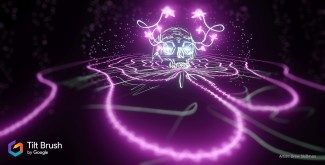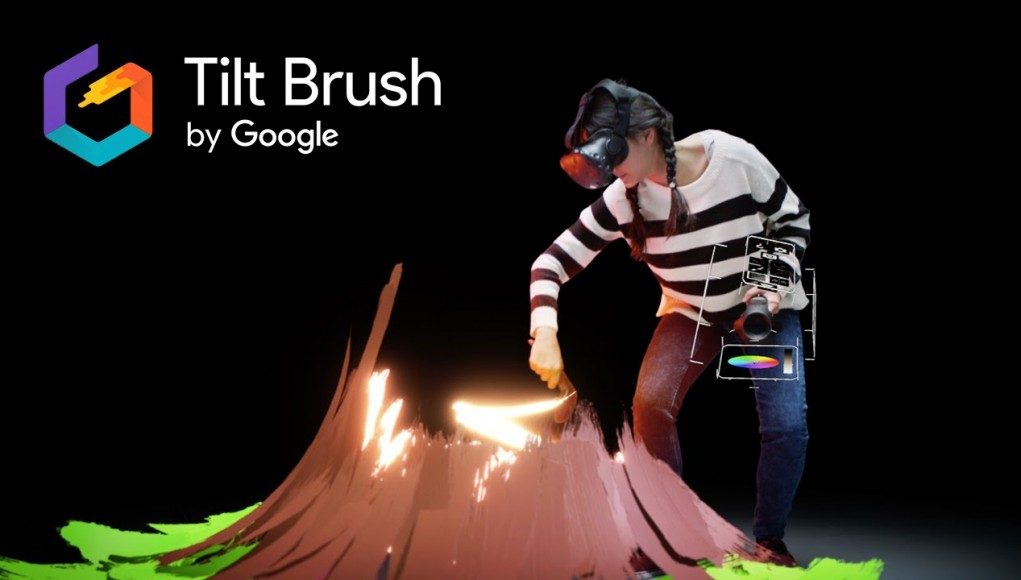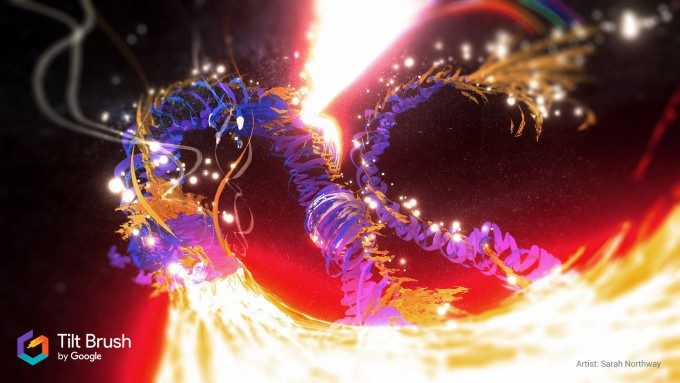The latest update to Tilt Brush brings welcome improvements, including support for showcasing creations on the popular online 3D model viewer Sketchfab.
Tilt Brush, Google’s virtual reality paint program for the HTC Vive got a major update recently to version 7.0, bringing a number of useful and novel features. Scaling, rotating, and translating sketches is now easily achieved by holding down the grip buttons on both controllers. This transformative feature is significant, particularly for those with limited space for room-scale VR, allowing the creation and viewing of huge sketches, no matter what your room bounds are.
One of the more experimental features just added to Tilt Brush is 3D model import, allowing OBJ files to be added directly into sketches; there’s great potential here for creatives and this will no doubt open the door to 3D artists interested in integrating Tilt Brush into their workflow. A high-resolution snapshot mode is also now available, allowing up to 6x the default resolution (11880 x 6588 vs. 1980 x 1098), very useful for showcasing sketches at the highest quality.

Further out of left field is a new mini-game called ‘Tiltasaurus’. Where there’s sketching to be done, word games are inevitable; Pictionary-style games have evolved organically among Tilt Brush fans, so the developers have created a proper feature to support this. When you start a game of Tiltasaurus, you’re shown a word to create, and your friends can guess while watching the desktop spectator cam (you can even add your own words if you want).
Along with several small fixes and improvements, the team has made controller swapping easy. Switch your drawing and pallet hands by simply tapping the bottoms of the Vive’s motion controllers together at any time, which will switch between left and right-handedness.
Meanwhile, an update to Sketchfab means better, wider sharing across the web of awesome VR artwork made inside of Title Brush. Like this beauty:
Sketchfab, a 3D content sharing platform, has been likened to ‘the YouTube of 3D models’, due to its extensive support of all major 3D file formats, simple interface, and embeddable sharing. More recently, it has embraced virtual reality, adding support for viewing models in mobile and desktop VR headsets. The VR features have expanded to a full VR interface, with support for teleportation movement. As the models can be animated, there is potential for viewing more than just static objects in VR; indeed Sketchfab are already claiming to be the largest online destination for VR content in the world.
With Tilt Brush’s focus on simple creation of formerly complex 3D art, sharing it should be equally easy. Thankfully, Sketchfab is now truly ‘Tilt Brush Ready’. With the latest version of Tilt Brush, which brings improvements to the FBX file output process, it’s easier to upload creations to Sketchfab. And on Sketchfab’s end, Tilt Brush models are now automatically recognised, with key parameters set to ensure the work closely resembles how it looked in the original software when you view it on the web in 3D or VR modes. This is achieved with a new ‘Additive’ transparency, luminance texture detection, bloom and filmic tone-mapping post processing, and defaulting to the same black background used in Tilt Brush.
Sketchfab’s CEO Alban Denoyel said, “We love Tilt Brush at Sketchfab, it’s the kind of tool that has made making content in 3D and VR so intuitive. And the democratization of content creation with natural tools like Tilt Brush are the reason we started Sketchfab in the first place.”








